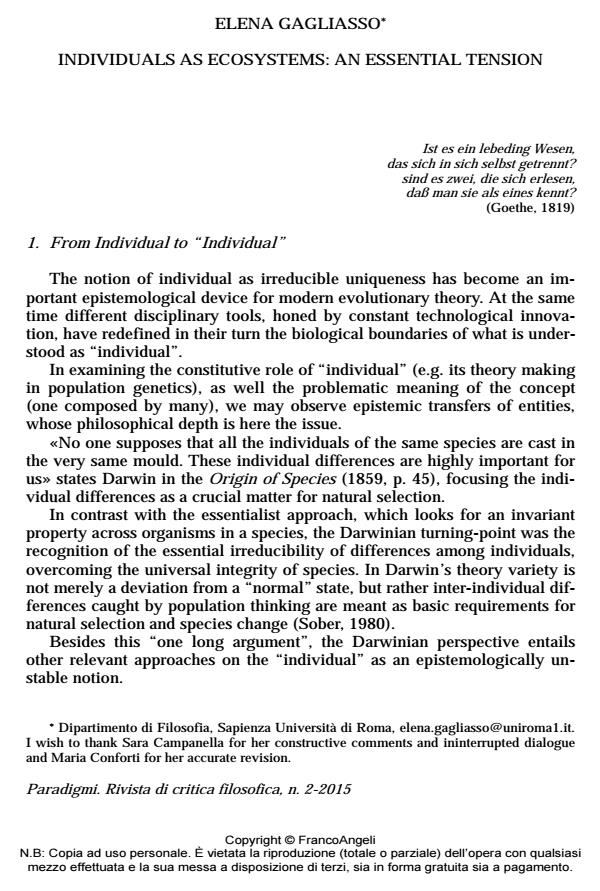Individuals as ecosystems: an essential tension
Titolo Rivista PARADIGMI
Autori/Curatori Elena Gagliasso
Anno di pubblicazione 2015 Fascicolo 2015/2
Lingua Inglese Numero pagine 18 P. 87-104 Dimensione file 83 KB
DOI 10.3280/PARA2015-002007
Il DOI è il codice a barre della proprietà intellettuale: per saperne di più
clicca qui
Qui sotto puoi vedere in anteprima la prima pagina di questo articolo.
Se questo articolo ti interessa, lo puoi acquistare (e scaricare in formato pdf) seguendo le facili indicazioni per acquistare il download credit. Acquista Download Credits per scaricare questo Articolo in formato PDF

FrancoAngeli è membro della Publishers International Linking Association, Inc (PILA)associazione indipendente e non profit per facilitare (attraverso i servizi tecnologici implementati da CrossRef.org) l’accesso degli studiosi ai contenuti digitali nelle pubblicazioni professionali e scientifiche
La filosofia della biologia attuale mostra una tensione epistemologica essenziale tra l’individuo e il suo "differire", ovvero la presenza di differenze individuali in un’unica popolazione. L’articolo sottolinea l’importanza in genetica di popolazioni, dove nonostante comuni strumenti matematici, perdurano interpretazioni conflittuali. L’articolo si prefigge di mostrare il dissolversi dell’unità e della singolarità del concetto di individuo alla luce della simbiontologia e di un più vasto pensiero popolazionale. Anche se lessicalmente immutato, il concetto di individuo, da un punto di vista filosofico, si carica di nuovi significati.
Parole chiave:Epigenetica, individuo, ologenoma, pensiero popolazionale, simbionti.
- Organisms and Environments as Combined Systems Elena Gagliasso, in Academicus International Scientific Journal /2019 pp.119
DOI: 10.7336/academicus.2019.20.09 - Percezione e biodiversità. Riflessioni fenomenologiche per un modello relazionale Alessio Martino, in Itinera /2025 pp.29
DOI: 10.54103/2039-9251/29668
Elena Gagliasso, Individuals as ecosystems: an essential tension in "PARADIGMI" 2/2015, pp 87-104, DOI: 10.3280/PARA2015-002007